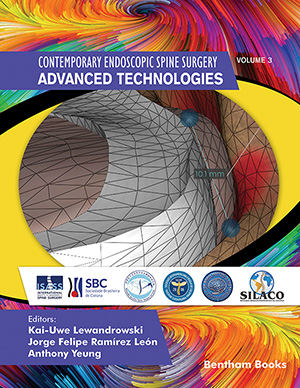Abstract
Best management practices of complications resulting from outpatient
transforaminal endoscopic decompression surgery for lumbar foraminal and lateral
recess stenosis are not established. Recent advances in surgical techniques allow for
endoscopically assisted bony decompression for neurogenic claudication symptoms
due to spinal stenosis. These broadened indications also produced a higher incidence of
postoperative complications ranging from dural tears, recurrent disc herniations, nerve
root injuries, foot drop, facet and pedicle fractures, or infections. Postoperative
sequelae such as dysesthetic leg pain, and infiltration of the surgical access and spinal
canal with irrigation fluid causing spinal headaches and painful wound swelling, as
well as failure to cure, are additional common postoperative problems that can lead to
hospital readmissions and contribute to lower patient satisfaction with the procedure. In
this chapter, the authors focus on analyzing the incidence of such problems and, more
importantly, how to manage them. While the incidence of these problems is recogniz-ably low, knowing the art of managing them in the postoperative recovery period can
make the difference between a flourishing endoscopic outpatient spinal surgery
program and one that will continue to struggle with replacing traditional open spinal
surgeries.
Keywords: Lumbar endoscopy, Transforaminal decompression, Complications, Sequelae, Postoperative management.






















